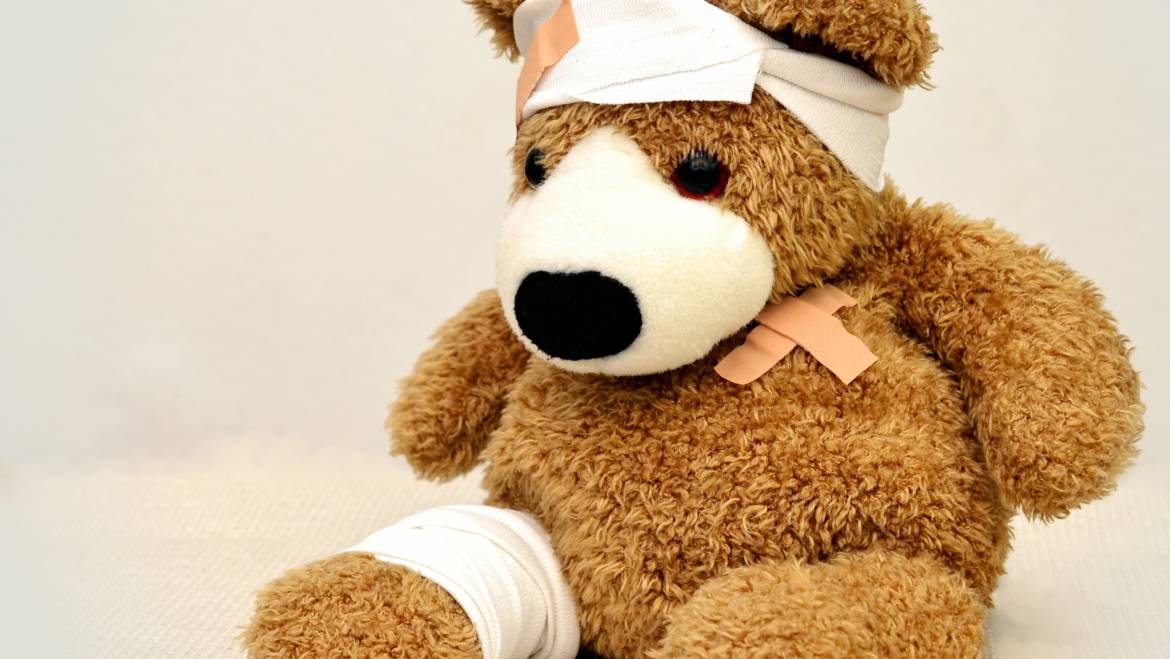Treat the Whole Person, Not the Hole in the Person
John Baxter was a retired banker, avid golfer, and Clemson graduate. He should have known better.
“Okay John. What brings you to the clinic today?”
He fidgeted on the exam table and had trouble meeting my eyes.
“I guess I should have come in before now, Robert. Just thought it would go away. My golfing buddies kept bugging me about it, so I finally gave in and here I am.”
I was sitting on a rolling stool in the exam room, and when he rolled up his right pants leg, I scooted closer. I held his foot in my hand and studied the egg-sized wound just above his medial ankle. It was partially scabbed over, draining, and surrounded by angry, red skin.
“Hmm… How long has this been going on?”
“Not long,” he muttered. “Three, maybe four months.”
I looked up at him and didn’t say anything. Just sighed and shook my head.
“Well, we’ve got some work to do.”
It took us two months to heal the wound, starting with getting the infection under control. He was fortunate though. Many of us—millions to be exact—have wounds that are even slower to heal and may not even heal at all. The important thing is to get treatment early on, and to make sure your health-care provider is addressing multiple factors—the “whole person”—and not just the “hole” in the person. Today we’re going to consider one of those factors—maybe the most important from the standpoint of what an individual can do to help him or herself. And that is proper nutrition. May not sound very exciting, but it’s absolutely critical. If you or a loved one has a chronic wound (anything lasting over three or four months), get medical attention and make sure you’re giving your body every chance to heal. I’ve attached our nutritional guidelines for patients with all types of wounds—one of the ways we treat the whole patient.
Optimal Nutrition for Wound Healing
Riverview Medical Clinic Guidelines
Wound healing is a predictable and complex process. It requires proper care of the wound and optimal nutrition to achieve the best results over the shortest period of time. Here are the guidelines we recommend for our patients with all types of wounds—lacerations, burns, pressure ulcers, venous stasis ulcers, and many others.
Total Caloric Intake
Adequate calories are needed for the requirements of wound healing. For those of us who are near normal weight (a normal BMI), this will be approximately 15 calories/pound/day. Example: if you weigh 175 lbs, your daily intake should be around 2,625 calories. For those of us underweight or losing weight, that number increases to 20 calories/pound/day.
Protein Intake
Protein is essential for many important bodily functions, including the added stress of wound healing. Most Americans don’t consume enough protein, and in the setting of a wound, the goal is .75grams/lb/day. For that 175 person, this would be around 130gms/day. It will be important to study your food labels or another reference to make sure you’re getting this amount. Of everything we recommend, protein intake is the most important.
The Importance of Water
Water is critical for proper healing, as well as many other vital functions. 2 ½ liters a day is a minimal goal.
Omega-3s – Fish Oil
One or two capsules a day has been proven to improve immune function and decrease infection rates.
Arginine
This is an amino acid, and supplementation has been shown to improve wound healing. 300-400 mgs/day is a reasonable amount.
Glutamine
Another important amino acid. We recommend 500 mgs/day.
Vitamin C
500 mgs twice a day is what we advise.
Vitamin A
This is the only setting in which we recommend this vitamin, but it turns out to be important for wound healing. 10-20,000 units a day is the proper range.
Zinc
Essential for normal cellular growth and replication. 40 mgs/day is sufficient.
A Couple of Other Important Points…
If you smoke, STOP!!! This is important for a whole host of reasons, but in the setting of a significant wound, smoking retards healing and increases the risk of infection. This is a “no-brainer.”
If you have diabetes, make sure you and your health-care provider are targeting your Hb A1C and working to achieve good blood sugar levels. If your diabetes is not controlled, wound healing will be compromised. In fact, having a significant wound will aggravate your diabetes, so pay close attention to this manageable problem.
If you’re concerned about your nutritional status or that of a loved one, there are a couple of simple assessment tools that you can use. Check these out on the internet:
Malnutrition Universal Screening Tool (MUST)
Mini Nutritional Assessment (MNA)
Remember, we’re treating the whole person, not just the hole.


Add Comment